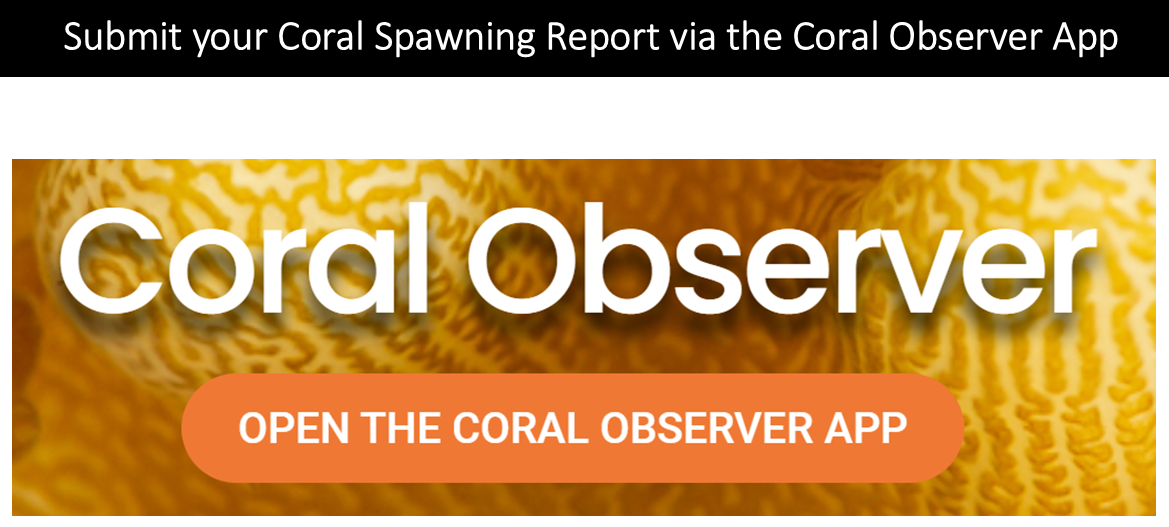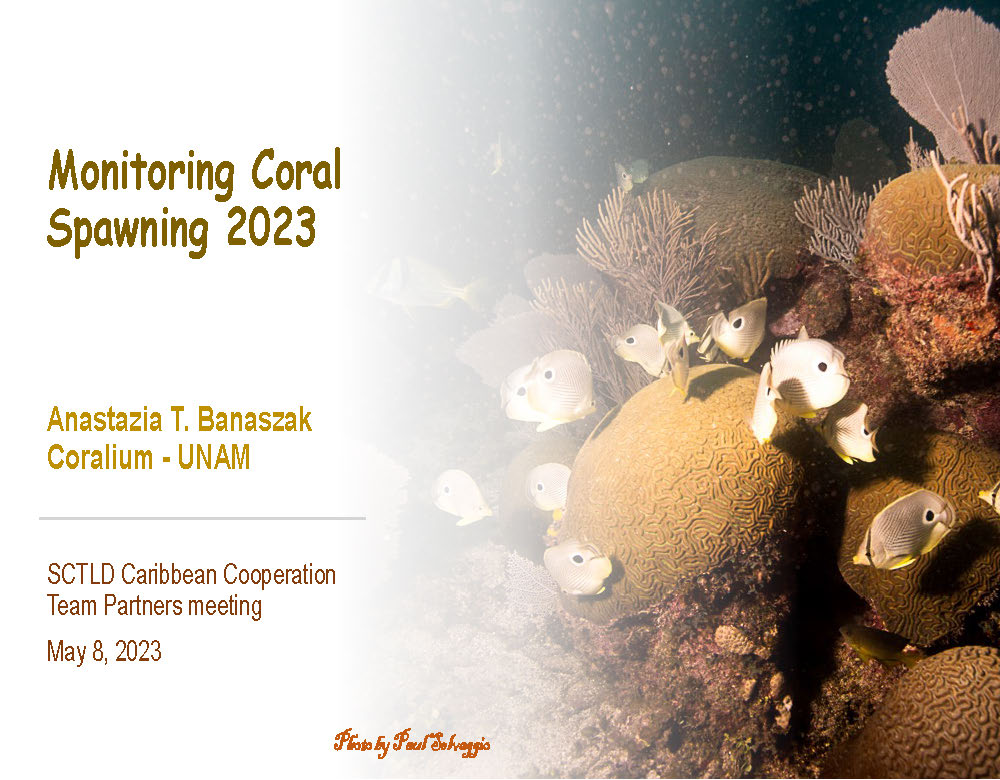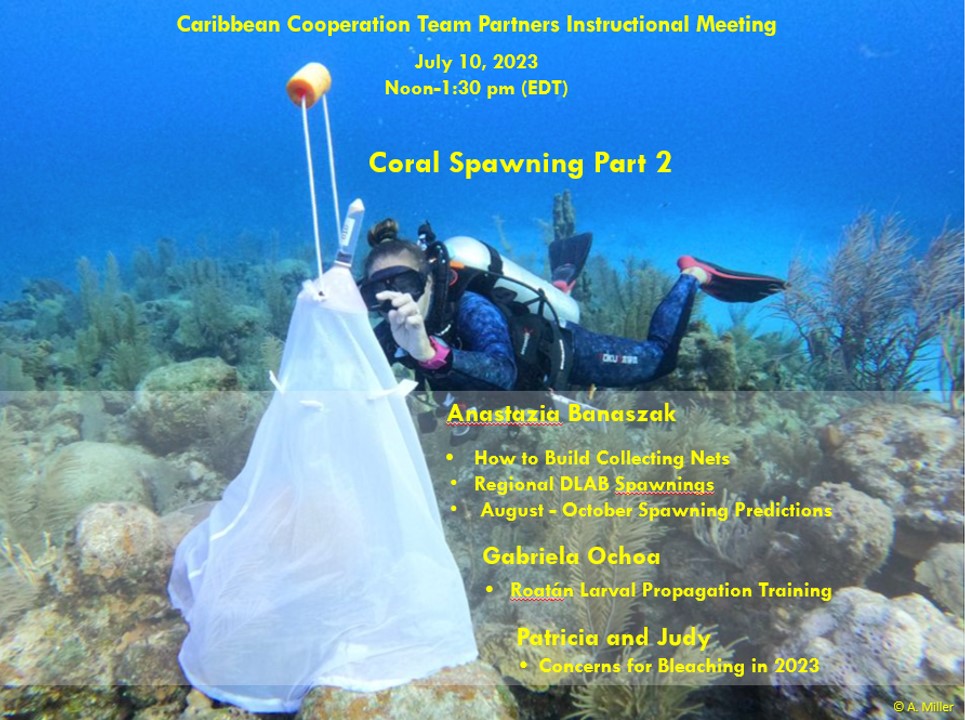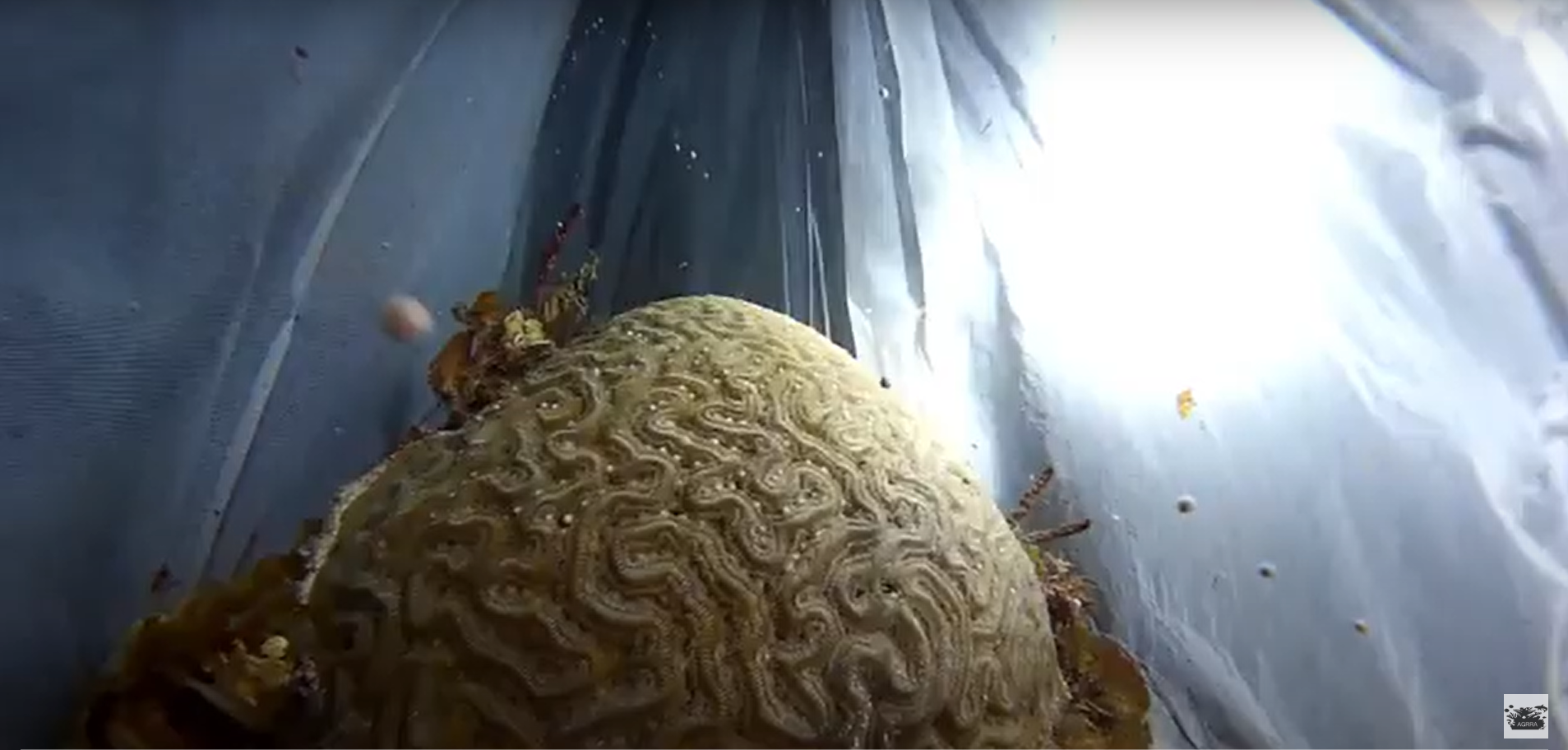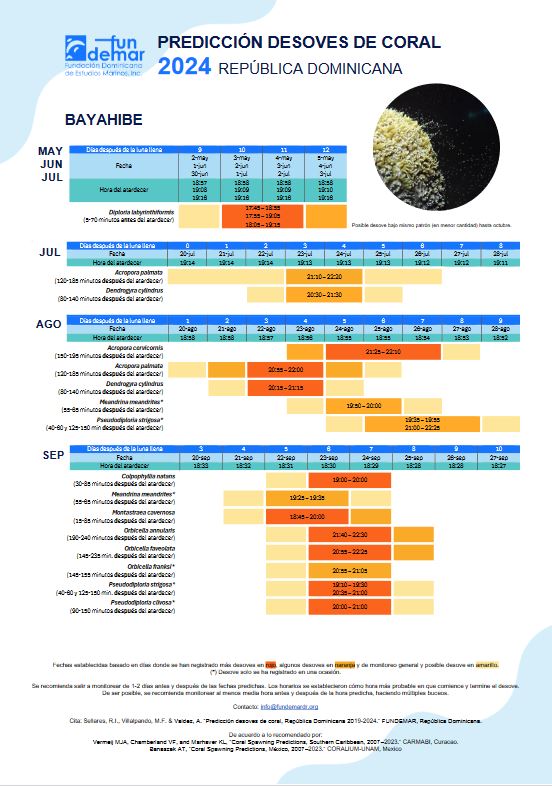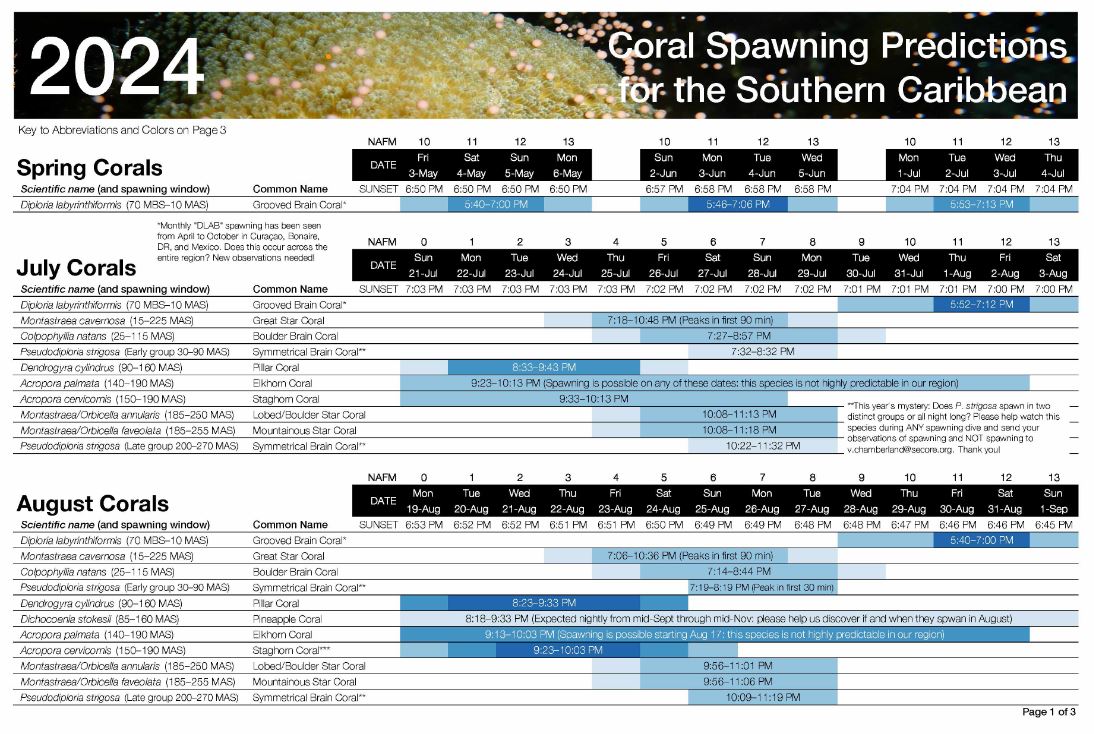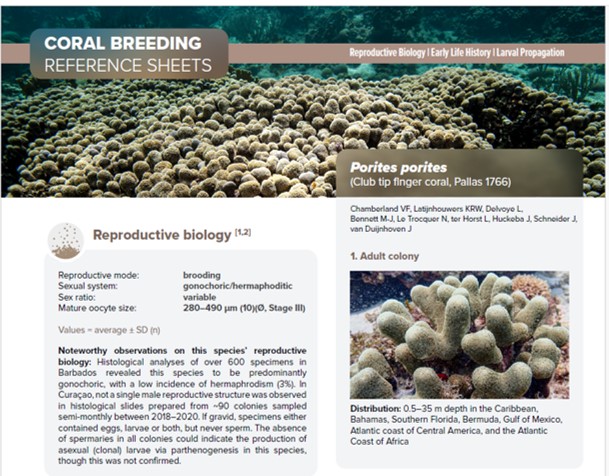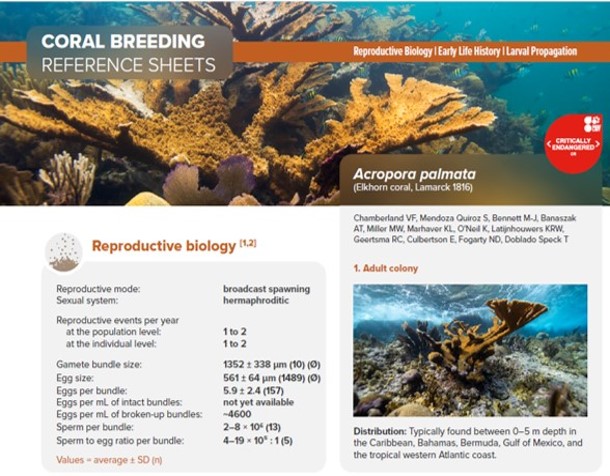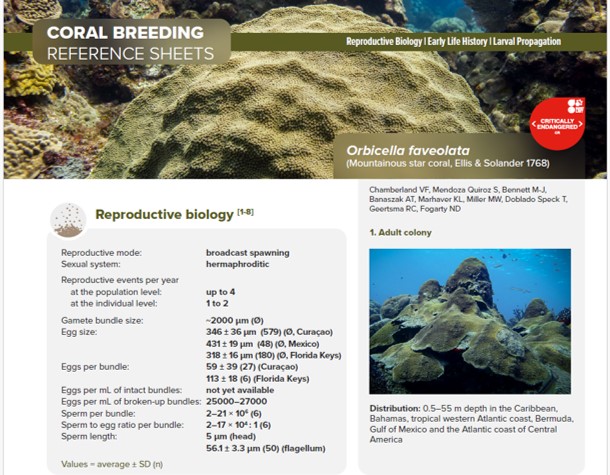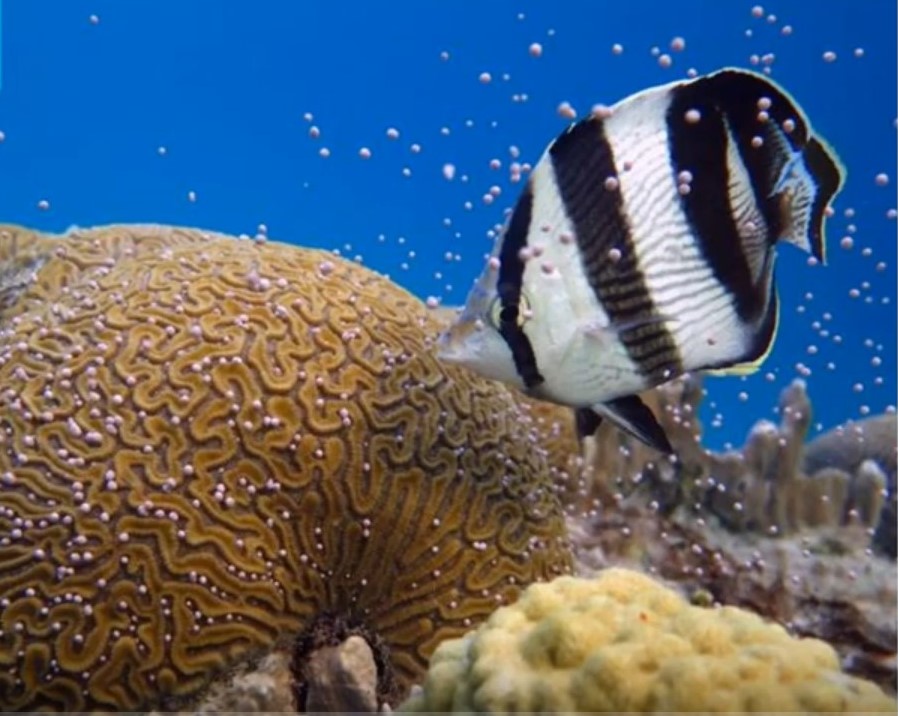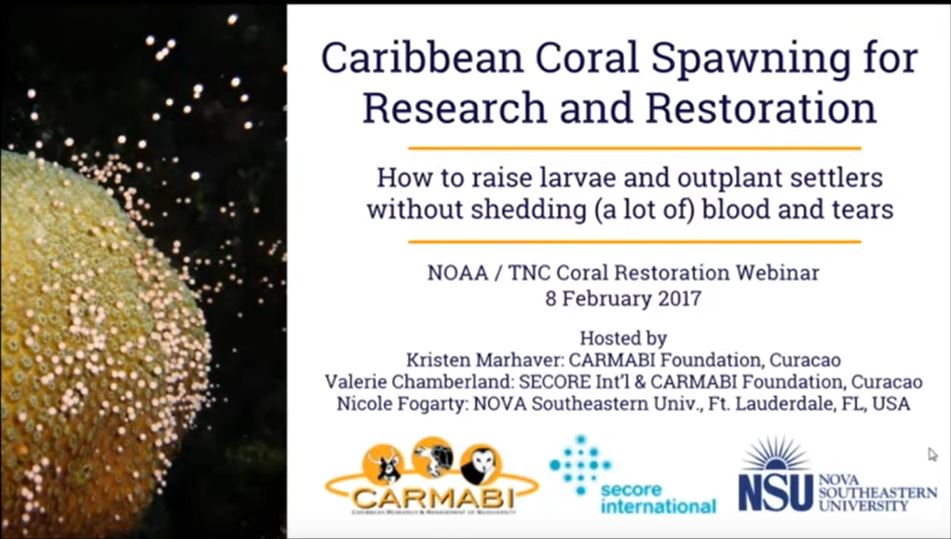Image: FGBNMS /Schmahl
Introduction
To continue to support Caribbean-wide monitoring efforts, we are hosting the Caribbean Coral Spawning Database, which includes dashboards and interactive maps (similar to SCTLD and Diadema tracking maps). You can share your observations via the Coral Observer app and join a network of scientists working together to document Caribbean-wide coral reproduction patterns and trends!
Your data will be integrated into the centralized database along with entries from other observers across the region. Your data will be displayed into open-access, interactive live maps and data visualization tools, which will be available soon. Your raw data files will not be made available for others to download without your explicit written consent. Your data or parts thereof may be analyzed for potential use in publications, reports or other products, but only after reception of your explicit written consent. Any resulting product would require your approval of content and your inclusion as a co-author.
Coral Reproduction
Corals can form new colonies by fragmentation or sexual reproduction. Fragmentation occurs when a piece or pieces of a colony break off and those that survive form new, genetically exact copies (clones) of the mother colony. Corals can also reproduce sexually. Sexual reproduction helps to maintain genetic diversity by the exchange of genetic material between different colonies of the same species, thus ensuring resilience and adaptation to changing environmental conditions.
Coral polyps contain reproductive cells that produce gametes. Species that produce both eggs and sperm at the same time are called hermaphrodites, whereas other species that have separate sexes with each colony producing either eggs or sperm are called gonochores.
Coral Spawning
Coral colonies of the same species release their gametes simultaneously into the water column on specific nights and at specific times, generally in the summer months, in an event called coral spawning. Here the motion of the waves causes the bundles to break up and release the sperm and eggs to mix with the sperm and eggs from other colonies of the same species. Synchronous spawning increases the chances of successful fertilization as it maximizes the encounter between eggs and sperm from different colonies.Coral breeding practitioners use spawning events to collect gametes, assist in their fertilization and culture the embryos and larvae to form new corals.
Sexual reproduction helps to maintain genetic diversity by the exchange of genetic material between different colonies of the same species, thus ensuring resilience and adaptation to changing environmental conditions.
By compiling observations from around the Caribbean, the spawning database will help to predict with more certainty when different coral species will spawn. These data will also help scientists better understand long-term coral reproduction patterns across the region, and those who aim to breed corals to restore declining coral populations or to cryopreserve gametes and larvae in coral conservation and rescue efforts.
Factors such as pollution, climate change, and coastal developments pose significant threats to coral reefs and can disrupt their reproductive cycles, potentially jeopardizing their long-term survival. Coral spawning is a critical event for the survival and growth of coral populations, which is why it is so important to track when it occurs.
How to Submit Your Data
Coral Observer is a progressive web app designed to automate data entry and support the centralized Caribbean Coral Spawning Database. Enter your observations by clicking on the Coral Observer block below, which will take you directly to the data entry app.
Live Spawning Tracking Map
This live tracking map will eventually show all the spawning observations collecting using Coral Observer. It will continually be updated as new observations are recorded, so check back often for new information.
Resources
Preparing for Spawning Season
Spawning Prediction Calendars
Mexican Caribbean – information provided by Coralium Lab. For more information, contact Anastazia T. Banaszak, Coralium, UNAM, banaszak@cmarl.unam.mx
Coral Spawning Prediction Calendar 2024 Mexican Caribbean
Calendario de Predicción del Desove de Corales 2024 Caribe Mexicano
Dominican Republic – information provided by FUNDEMAR
BAYAHIBE-DOMINICUS SURESTE DE REPÚBLICA DOMINICANA -PREDICCIÓN DESOVES DE CORAL 2024
Southern Caribbean – information provided by CARMABI
The Bahamas – information provided by Perry Institute of Marine Sciences
Coral Breeding Reference Sheets
The Coral Reef Consortium (CRC) recently released NEW Coral Breeding Reference Sheets (CBRS) developed by the CRC Larval Propagation Working Group in partnership with SECORE International. The 4 CBRS include Acropora palmata, Orbicella faveolata, Diploria labyrinthiformis, and Porites porites. To access them, click on the photo below. For more resources see the CRC’s Propagation and outplanting resources.
Webinars
Video: Caribbean Coral Spawning for Research & Restoration – February 8, 2017
How to raise larvae and outplant settlers without shedding (a lot of) blood and tears.
Publications
For other resources and related scientific publications relevant to Caribbean coral spawning, please reference this pdf document.
Founders of the Caribbean Coral Spawning Database
Anastazia Banaszak, Laboratorio de Investigación Integral Para la Conservación de Arrecifes (CORALIUM LAB), Universidad Nacional Autónoma de México (UNAM)
Valérie Chamberland, SECORE International & Caribbean Research and Management of Biodiversity (CARMABI)
Patricia Kramer, Ocean Research and Education Foundation / Atlantic and Gulf Rapid Reef Assessment (ORE / AGRRA)
Lynnette Roth, Ocean Research and Education Foundation / Atlantic and Gulf Rapid Reef Assessment (ORE / AGRRA)
Jacob Roth, Ocean Research and Education Foundation / Atlantic and Gulf Rapid Reef Assessment (ORE / AGRRA)
Jenny Mallon, Coral Observer, National Coral Reef Institute (NCRI), & Nova Southeastern Univserity (NSU)
Rusty Leigh, Coral Observer & quantumweb
Vanessa Francisco, Laboratorio de Investigación Integral Para la Conservación de Arrecifes (CORALIUM LAB), Universidad Nacional Autónoma de México (UNAM)
Project Advisors
Nicole Fogarty, University of North Carolina Wilmington (UNCW)
Kristen Marhaver, Caribbean Research and Management of Biodiversity (CARMABI)
Margaret Miller, SECORE International

Data Contributors
Caribbean Research and Management of Biodiversity (CARMABI), Curaçao
Coral Spawning Research Group (CSRG), Facebook
Fundación Dominicana de Estudios Marinos (FUNDEMAR), Dominican Republic
Laboratorio de Investigación Integral Para la Conservación de Arrecifes (CORALIUM LAB), México
Nova Southeastern University (NSU), USA
SECORE International, Curaçao and México
Universidad Nacional Autónoma de México (UNAM), México
University of North Carolina Wilmington (UNCW), USA
Funders
Coral Research and Development Accelerator Platform (CORDAP)
Ocean Research and Education Foundation / Atlantic and Gulf Rapid Reef Assessment (ORE / AGRRA)
Laboratorio de Investigación Integral Para la Conservación de Arrecifes (CORALIUM LAB)
For more information about Caribbean spawning please contact Anastazia T. Banaszak (CORALIUM LAB), email: banaszak@cmarl.unam.mx or Valérie Chamberland (CARMABI, SECORE), email v.chamberland@secore.org
